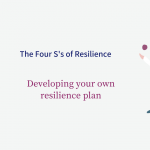Flexibility and stretching exercises are essential components of a well-rounded fitness routine. They not only enhance mobility and range of motion but also play a crucial role in injury prevention. This article explores the benefits of flexibility and stretching exercises, their impact on overall physical well-being, and provides insights into incorporating these exercises into your fitness regimen.
I. Importance of Flexibility and Stretching:
- Enhanced Range of Motion: Flexibility exercises help improve joint mobility and increase the range of motion in muscles and tendons. This allows for better movement efficiency and reduces the risk of muscle imbalances and postural issues.
- Injury Prevention: Maintaining good flexibility reduces the risk of injuries by improving muscle elasticity and reducing muscle tension. Flexible muscles are less prone to strains, sprains, and other musculoskeletal injuries during physical activities.

- Improved Posture and Alignment: Regular stretching exercises promote proper alignment and posture by targeting tight muscles and relieving tension. Improved posture not only enhances physical appearance but also reduces strain on the muscles and joints.
- Enhanced Athletic Performance: Flexibility plays a vital role in athletic performance. Increased range of motion enables athletes to perform movements more efficiently, leading to improved agility, speed, and power.
- Better Muscle Balance: Flexibility exercises help maintain muscular balance by addressing muscle imbalances. Imbalances can lead to compensatory movements and increase the risk of injuries, while balanced muscles support optimal movement patterns.
II. Types of Stretching Exercises:
- Static Stretching: Static stretching involves holding a stretch for a prolonged period, typically 15-60 seconds. It targets specific muscles and gradually increases the stretch. Examples include hamstring stretches, calf stretches, and quadriceps stretches.
- Dynamic Stretching: Dynamic stretching involves moving through a range of motion to warm up the muscles and prepare them for physical activity. Dynamic stretches often mimic movements used in the activity or sport. Examples include leg swings, arm circles, and walking lunges.
- Proprioceptive Neuromuscular Facilitation (PNF): PNF stretching combines passive stretching and muscle contraction. It involves a partner or self-applied resistance to facilitate a deeper stretch. PNF stretching is highly effective in improving flexibility and range of motion.
- Yoga and Pilates: Yoga and Pilates incorporate a combination of stretching exercises, strength training, and balance work. These practices focus on flexibility, core stability, and body awareness.
III. Incorporating Flexibility and Stretching Exercises:
- Warm-Up: Prior to stretching, engage in a brief warm-up to increase blood flow to the muscles and prepare them for stretching. Light cardio exercises such as jogging or jumping jacks for 5-10 minutes can effectively warm up the body.
- Frequency and Duration: Aim for flexibility exercises at least 2-3 times per week. Perform stretches for each major muscle group, holding each stretch for 15-60 seconds. Repeat each stretch 2-4 times.

- Proper Technique: Practice proper stretching techniques to ensure safety and effectiveness. Avoid bouncing or jerking movements during stretches and focus on gradual and controlled motions. Breathe deeply and relax into the stretch without causing pain or discomfort.
- Target Major Muscle Groups: Focus on stretching major muscle groups such as the calves, hamstrings, quadriceps, hip flexors, chest, shoulders, and back. Tailor your stretching routine to specific areas of tightness or limited mobility.
- Include Flexibility in Workouts: Integrate flexibility exercises into your regular workout routine. Perform stretches after a workout when the muscles are warm or as a separate session on rest days.
Flexibility and stretching exercises are vital components of a well-rounded fitness program. By incorporating regular stretching into your routine, you can enhance mobility, prevent injuries, improve posture, and optimize athletic performance. Remember to choose the appropriate stretching techniques, focus on proper form, and gradually increase the duration and intensity of stretches. With consistency and dedication, flexibility exercises can greatly contribute to your overall physical well-being and help you lead a healthier, more active lifestyle.




















Add Comment